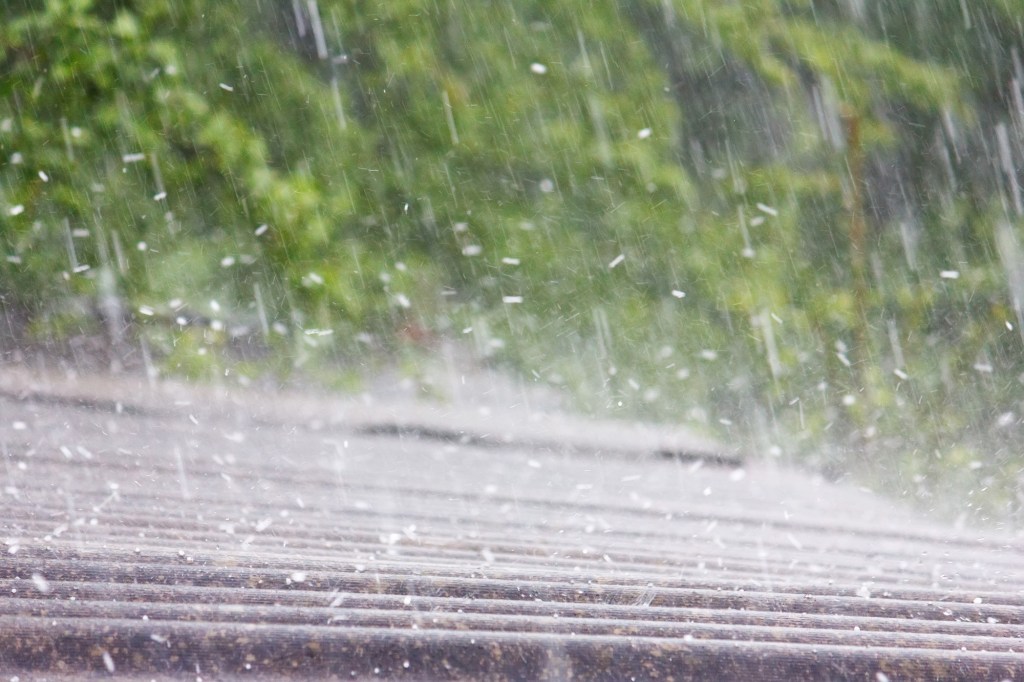Weather can be a relentless force. It affects everything we do, including the lifespan of our roofs. But did you know how much impact it truly has? Whether you live under constant sun or bear the brunt of harsh northern winters, the weather around you plays a significant role in the lifespan of your home’s roofing.
Hail – Nature’s Firepower

Hail isn’t just a nuisance; it’s destructive. Big or small, hailstones persistently beat down, denting and breaking shingles. Every hailstorm equals a vital checkup. Left unchecked, the damage multiplies, leading to costly roofing overhauls.
For hail-prone areas, installing an impact-resistant roof can add a protective layer to your home. These specialized shingles absorb the impact, minimizing damage during hailstorms. Furthermore, after every significant event, an inspection ensures that any damage is promptly addressed to avoid further deterioration.
For homeowners grappling with the aftermath of weather-related roof damage, seeking roof repair services can provide the necessary expertise to maintain and restore your roof’s integrity. Professional input ensures that minor issues don’t spiral into major costs.
Rain – Relentless and Unyielding
When raindrops pile up, roofs can struggle. Frequent downpours mean prolonged water exposure, leading to leaks and rot. A wet climate equals a moist roof. And moisture? It’s a recipe for disaster. Not to mention, standing water from clogged gutters speeds up the damage.
Installing a proper drainage system is crucial in regions with heavy rainfall. Homeowners should invest in an effective gutter system that channels water away from the roof and prevents pooling. Regular roof inspections during the rainy season can identify and address small issues before they escalate into significant damage.
Sunlight – The Unseen Saboteur

Constant exposure to sunlight is a sneaky enemy of roof longevity. UV rays break down materials, causing shingles to become brittle and crack over time. The sun doesn’t just tan our skin; it corrodes our roofs too. This wear and tear is accelerated in regions that bake under the hot sun all year long.
However, there are ways to combat sunlight damage. Homeowners can opt for reflective roof coatings or UV-resistant materials. These options help mitigate the impact of UV rays, enhancing the durability of the roof. Paying attention to the direction of your roofing can also play a part, as some sides may take on the sun’s direct exposure more than others. In these areas, utilizing reflective or cool roofing techniques can be a game-changer.
Wind – The Unforgiving Force
Windy weather puts roofs to the test. Strong gusts can lift and tear shingles, transforming minor damage into major repairs. The more your roof gets shaken by the wind, the weaker it becomes. Year after year, the cumulative effect can be devastating.
To withstand high winds, roofs can be reinforced with additional fastening for shingles and the use of impact-resistant materials. For homes in wind-prone areas, a roof inspection following a particularly windy season is advised to assess and rectify any potential damage. Property owners may even need to consider reshaping their trees to prevent limbs from falling on their roofs.
Snowfall – Winter’s Heavy Burden

Snow is the heavyweight contender in this weather challenge. It applies pressure, testing the structural integrity of roofs. When it melts, it can seep into cracks and cause even more significant issues. For those in snowy climates, roofs bear the brunt while homeowners face potential collapses.
Insulation is key in snowy regions. An insulated roof helps prevent the formation of ice dams, which are caused by melting and refreezing snow. Ice dams can block drainage, causing water to back up and eventually seep through roofing materials. Additionally, regularly removing excess snow from rooftops minimizes the risk of added weight and pressure.
Humidity – The Quiet Damager
High humidity levels can be just as damaging as storms. Dampness compromises roofing materials, making them swell and warp. Humidity never sleeps. Instead, it persistently attacks, leaving roofs vulnerable to mold and rot over time. Warm, humid climates spell trouble for anyone hoping to extend their roof’s life.
Conclusion

The weather is more than just a conversation starter; it’s a focal player in the drama of roof longevity. For homeowners, understanding these weather forces means preparing better and acting faster. It’s not about beating the elements but knowing it takes due diligence to maintain a sturdy roof under all conditions. As weather patterns change, so must our approach to shelter protection.
Related
<!–
–>
